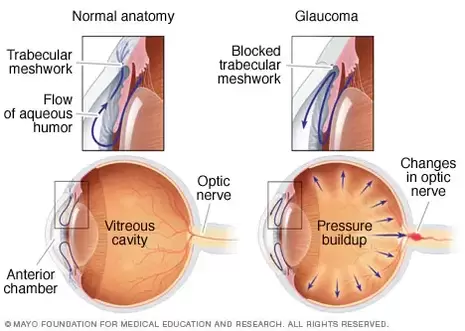Focus of the Month
|
January is Glaucoma Awareness Month!
This eye condition affects your optic nerve and can lead to blindness. It is a progressive condition most common in older adults. Any damage that occurs to your eyes is permanent and while there is no cure for glaucoma, it can be slowed or even prevented if your eye doctor catches it early. Some of the risk factors for glaucoma include advanced diabetes or high blood pressure, or if you have family history of the condition. |
There are multiple types of glaucoma. The most common, open-angle glaucoma, is caused by high pressure in your eyes. This pressure pushes on the optic nerve and damages it. Pressures can be lowered or helped by the use of drops. This relieves the optic nerve and prevents further damage. Another type of glaucoma is normal-tension glaucoma. With this type, the pressures are within normal ranges, but there is still damage to the optic nerve. It can be treated the same way as open-angle glaucoma. If untreated, glaucoma can cause blind spots in your vision, often in your peripheral vision. Like many eye conditions, glaucoma doesn’t have any noticeable symptoms until it starts to impact your vision.
Our doctors see their patients with glaucoma every six months to make sure their pressures are still within a good range and that there hasn’t been any further damage to your eyes. If you are concerned about your eyes or have a family history of glaucoma, schedule an appointment with Dr. Humpherys or Dr. Palmer today!
Source: The Mayo Clinic
Our doctors see their patients with glaucoma every six months to make sure their pressures are still within a good range and that there hasn’t been any further damage to your eyes. If you are concerned about your eyes or have a family history of glaucoma, schedule an appointment with Dr. Humpherys or Dr. Palmer today!
Source: The Mayo Clinic








